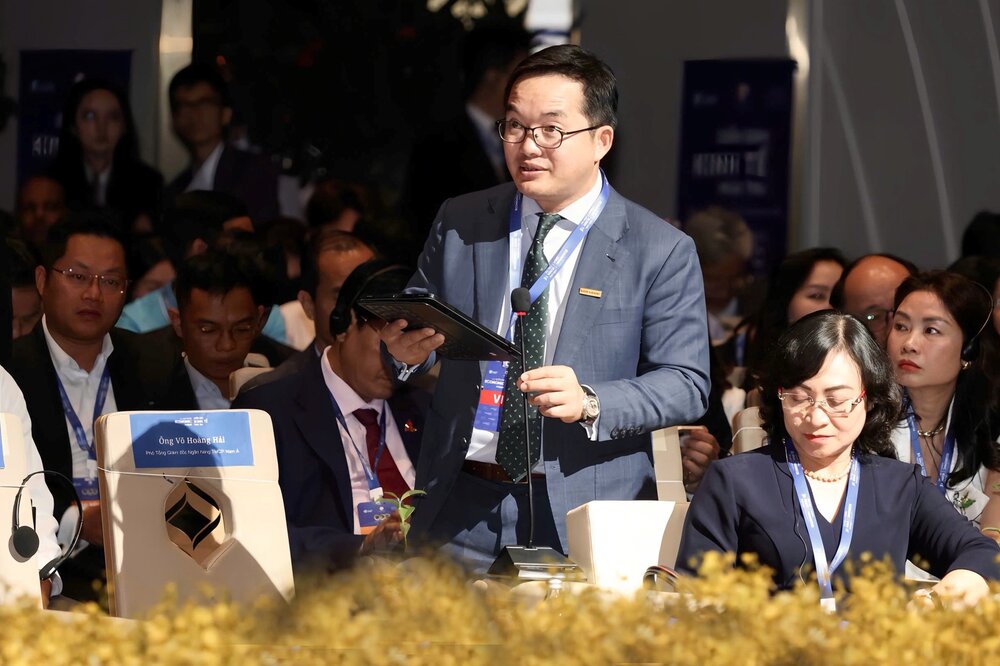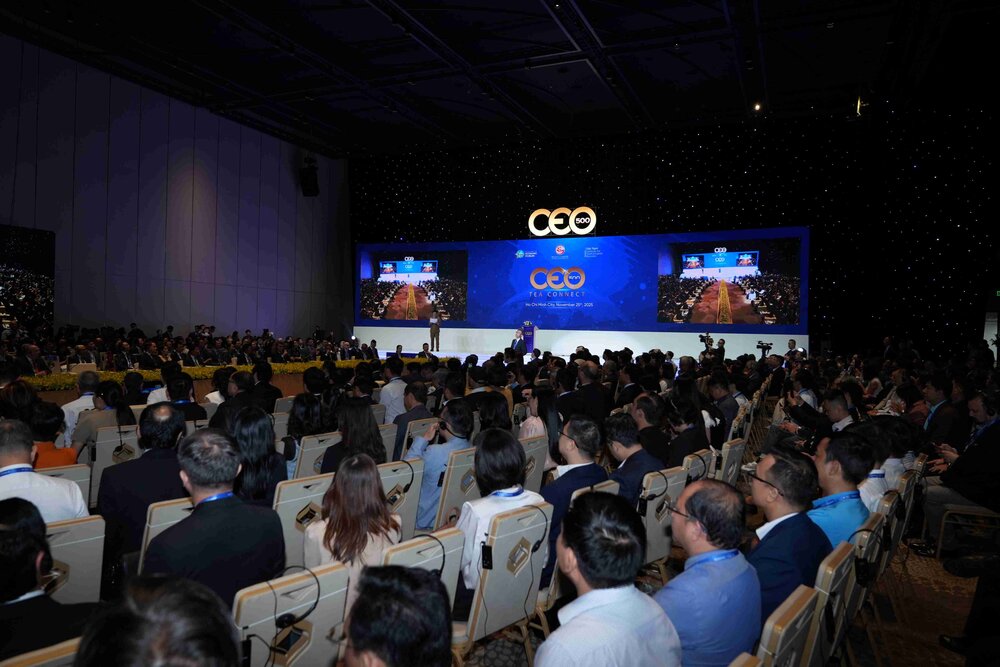The forum was chaired by the Ho Chi Minh City People's Committee, assigned by the Center for the Fourth Industrial Revolution in Ho Chi Minh City (HCMC C4IR), in coordination with the World Economic Forum (WEF), Central ministries and branches organized in Ho Chi Minh City from November 25-27.
The forum aims to become a space for high-level policy dialogue between the Government of Vietnam and the City, international organizations, the business community and the academic community - a place to share knowledge, initiatives and practical action solutions to promote public-private partnership, green transformation, digital transformation, towards a smart economy and sustainable development.
Within the framework of the event, the CEO500 program - TEA CONNECT, with the theme "HCMC: Towards an international super city in the digital age", the discussion session became an important highlight of this year's forum.

Representing Nam A Bank, Mr. Vo Hoang Hai - Deputy General Director made proposals on green financial products, aiming to attract foreign capital for the Ho Chi Minh City International Financial Center - a factor to realize the vision, making Ho Chi Minh City a financial center of the region.
In the context of Vietnam's efforts to green transformation, the proposal of Nam A Bank representative attracted great attention when outlining three key financial product pillars to unblock foreign capital flows: Green supply chain finance, carbon credit trading and Environmental commodity trading.
Breakthrough with Green Supply Chain Finance (G-SCF)
Emphasizing the importance of Green Supply Chain Finance (G-SCF), according to Mr. Vo Hoang Hai, this is a mobile capital supply solution associated with ESG criteria (Environment, Society and Governance), bringing preferential interest rates and limits to suppliers meeting sustainability standards.
According to Nam A Bank's leaders, G-SCF is highly compatible with global ESG standards of the International Finance Corporation (IFC), the Asian Development Bank (ADB) and development finance institutions (DFIs) and international banks.
This structure helps reduce risks based on leading enterprises and has the potential to expand greatly in Vietnam's key export industries.
Mr. Vo Hoang Hai proposed applying Blockchain, IoT and AI technology to trace the origin to score ESG, and called for a pilot "sandbox" mechanism for a green SCF platform in Vietnam to keep up with international standards such as the Mas'NP Paribas model, IFC's GSCF program or the EU's Sustainable Factoring model.
Billion-dollar "gold mine" from the carbon Difficulty market
The second pillar mentioned is the carbon credit transaction. Mr. Vo Hoang Hai commented that this is a market with a scale of billions of USD with great demand from multinational corporations and climate funds.
"Developing a national carbon exchange for high-quality carbon credits not only meets the needs of FDI enterprises but also opens up opportunities for cooperation with partners such as Singapore under Article 6 of the Paris Agreement on Climate Change, allowing countries to cooperate voluntarily and transfer carbon credits to achieve the goal of reducing greenhouse gas emissions," Mr. Hai emphasized.
To realize this, Mr. Vo Hoang Hai proposed applying satellite and IoT technology to measurement, reporting and appraisal (MRV) activities, in order to direct capital flows into renewable energy and regenerative agriculture, positioning Vietnam as the carbon center of the region.

Pioneering the Environmental Goods Exchange
The third spearhead is the Environmental Goods Exchange, which includes products such as green metals, renewable energy certificates (REC & PPA) and sustainable agricultural products.
Taking advantage of Vietnam's strengths in agriculture and renewable energy, Nam A Bank representative proposed piloting trading floors for green coffee, low-carbon rice and green metals. These are areas that are in great demand from enterprises in the RE100 group and global impact investment funds.
To keep up with the trend, Vietnam needs to quickly apply international standards, from LME's low-carbon metals, REC credit on SP Group's blockchain platform, to a traceability model such as GrowForMe.
Mr. Vo Hoang Hai affirmed that the successful implementation of the above 3 pillars will help mobilize capital effectively across the border, while supporting the development of the Ho Chi Minh City International Financial Center in the direction of becoming a green financial center.
This is a necessary step to enhance Vietnam's prestige in the international ESG market, build a transparent digital ecosystem and effectively support the Government's Net Zero goal by 2050.
With a pioneering role in "greening" capital flows and attracting international resources, Nam A Bank has become one of the important linkages, accompanying Ho Chi Minh City in making efforts to realize the goal of building an International Financial Center, a goal associated with sustainable development.











